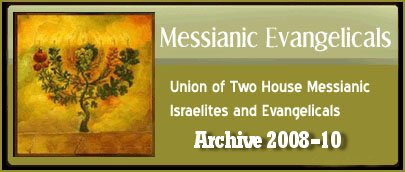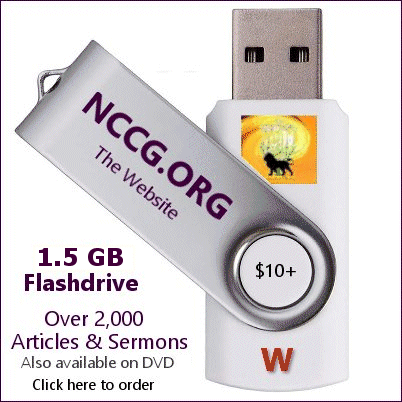RESOURCES
5-144000
A
B
C
D
E
F
G
H
I
J
K
L
M
N
O
P
Q
R
S
T
U
V
W
Y
Z
|
|

|
Yitro “Jethro” - Shemot (Exodus) 18:1- 20:23
Posted by Lev/Christopher on February 8, 2009 at 1:18am
in Torah Studies
20 Sh'vat 5769 – February 14, 2009
In the hustle and bustle of the modern age, it is easy to loose sight of what truly makes life worth living. The high-speed society we live in has changed our focus from family, friends, and community to a focus of success. Individuals are now faced with a conflict between family time and professional success. As a result, communities are losing the cohesion that was once far more important. Believers are also being forced to choose between a success in the business world and family time. As a result, many believing communities are becoming less interdependent and more disconnected. As a result, many groups are becoming isolated. The unfortunate outcome of isolation, is that many believers in the messianic community no longer realize that they are part of a greater body. HaShem dealt with a similar situation when he tried to unite the mixed multitude. HaShem planned to turn a group of people with varied beliefs into one community, with one G-d and one set of rules. In Yitro we can see how HaShem was able to turn a mixed multitude into a single nation and create a unified faith. To establish one nation and one faith HaShem taught Yisrael the importance of preparation, reliance, and revelation.
The first phase of building a unified community is preparation. Preparation requires starting with likeminded individuals. Shemot 19:11-13 states: “Be ready against the third day: for the third day the LORD will come down in the sight of all the people upon mount Sinai. And thou shall set bounds unto the people round about, saying, Take heed to yourselves, that ye go not up into the mount, or touch the border of it: whosoever touch the mount shall be surely put to death: There shall not an hand touch it, but he shall surely be stoned, or shot through; whether it be beast or man, it shall not live: when the trumpet soundeth long, they shall come up to the mount.” Moshe trained the mixed multitude in the appropriate way to approach HaShem. All of the people were required to be sanctified the same way before approaching HaShem. It was crucial for everyone to follow HaShem’s prescribed method. If they were not unified when approaching HaShem, the consequence would have been devastating. Without the preparation required to approach HaShem the way that He accepts, it is impossible to enter in to His presence. Preparation of every individual is essential for a community, because it unifies the worship under the parameters that are acceptable to HaShem.
The second phase of creating a unified community is reliance. Reliance consists of two parts. The first part is finding like-minded believers willing to share in the responsibilities of the community. When Yeshua was ready to build his community, he located apostles willing to share in the responsibilities. In Shemot 18:17-18 the Torah has a parallel passage which state, “Moses’ father in law said unto him, the thing that thou doest is not good. Thou wilt surely wear away, both thou, and this people that is with thee: for this thing is too heavy for thee; thou art not able to perform it thyself alone.” Moshe also located individuals willing to share the responsibilities of the community. Both Yeshua and Moshe desired to build communities that shared problems and responsibilities. Finding individuals to share the responsibilities of the community is essential for the survival of any believing community.
The second part of reliance is the assignment of individuals into the duties they are called to perform. Shemot 18:21-22 states:“you shall provide out of all the people able men, such as fear God, men of truth, hating covetousness; and place such over them, to be rulers of thousands, and rulers of hundreds, rulers of fifties, and rulers of tens: And let them judge the people at all seasons: and it shall be, that every great matter they shall bring unto thee, but every small matter they shall judge: so shall it be easier for thyself, and they shall bear the burden with thee”. Individuals sharing in the responsibilities of the community are also required to delegate HaShem’s authority to the community. Therefore, it is critical that they are placed in positions they are anointed to fulfill. If they are not placed in the appropriate positions, they will not be able to render anointed decisions. In other words, HaShem gives wisdom to individuals to support their anointing. Placing an individual in a position where he or she is not called is like allowing a plumber to be an electrician or allowing an electrician to be a nuclear physicist. Building a unified community requires finding sincere workers and placing them in areas of responsibility in which they are anointed.
The final phase of building a unified community is revelation. Revelation is important since it allows the entire community to receive the knowledge of HaShem. In Shemot 20:21-22 HaShem’s commission to Moshe states “the people stood afar off, and Moses drew near unto the thick darkness where HaShem was. The LORD said unto Moses, Thus thou shall say unto the children of Israel, you have seen that I have talked with you from heaven.” The people stood away from HaShem’s presence because they were afraid. Therefore, HaShem chose Moshe as an intermediary. Moshe’s mission was to reveal HaShem’s instruction to the children of Yisrael. In other words, Yisrael received the revelation of HaShem through the testimony of Moshe. As a result, all of Yisrael received the same knowledge that Moshe was given. By revealing His intentions to the whole community this way, HaShem prevented individuals who formulated their own interpretations from deceiving the multitudes. This is why revelation is critical for any community. Revelation to more than one individual, strengthens the word of HaShem in each individual. As a result, it becomes harder to deceive an entire community.
In the portion of Yitro, we find that HaShem’s plan for a unified community is to transform a mixed multitude in to one nation unified through service and Torah. However, creating this type of unified community from the mixed multitude would require many changes. HaShem required all of the mixed multitude to be prepared to approach Him uniformly. Therefore, all of the mixed multitude needed to conform to HaShem’s standards. Until the mixed multitude learned to conform to HaShem’s standards, no one could safely approach His Holy presence. HaShem also formed the mixed multitude into a group of likeminded individuals willing to share communal responsibilities. As a result, the entire mixed multitude became part of a commonwealth that shared in the welfare of the whole community. The mixed multitude also needed unified instruction from HaShem. Therefore, HaShem chose Moshe as an intermediary to uniformly reveal His will to the people. As a result, individual faith was strengthened and HaShem’s word was shared equally within the community. Therefore, it became more difficult for deception to enter the camp. At mount Sinai HaShem transformed a mixed multitude into one community. From the examples, in Yitro, we can learn how to apply the same techniques HaShem used, to unifying our own messianic communities.
Rabbi Yaakov benYosef - ABOUT Torah
|


This page was created on 5 May 2010
Updated on 5 May 2010
Copyright © 1987-2010 NCCG - All Rights Reserved
|
|


